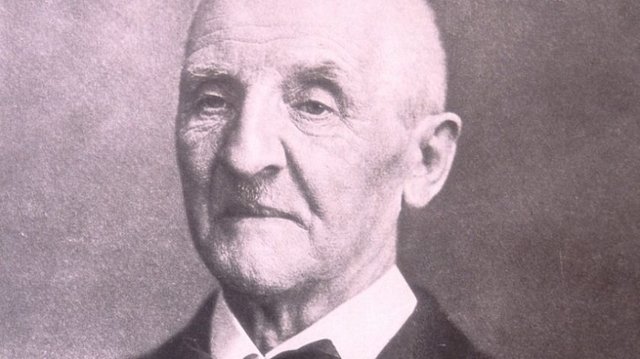[CLASSICAL MUSIC] Bruckner's Seventh - An Apprentice's Farewell to His Master 🎻
The Seventh symphony was composed between 1881-1883 and premiered in 1884 in Leipzig under the direction of Arthur Nikisch. This performance made Anton Bruckner (1824-1896) known as a symphonic master worldwide. Even in Vienna they were forced to recognize him as the great symphonist after the performance there in 1886, even if the symphony was subjected to severe criticism by the opponents of Bruckner and Wagner. Beside the fourth, the romantic, this is the most performed and perhaps also the most accessible, not least due to the fact that the melodic riches here more than in any of the composer's symphonic output feel so natural and organic.

If you're already familiar with this original music and has accepted its great contrasts between gigantic tonal blocks and gracefully floating flute tones, its interrupted escalations that only after numerous repetitions reach a reluctant culmination, then you're more than happy to be led into this grand and spacious music again.
Bruckner wrote large parts of the symphony after visiting a performance of Parsifal in Bayreuth in the summer of 1882, which was the last time the two giants met; Wagner died in February the following year. Bruckner's piety along with his worship of Wagner is widely regarded as the main contributing factors for the grandeur of his music. Certainly there is a sacred character in many parts of the music, but it's mostly dominated by a sensualism that has more to do with Wagner than with God. The simple and beautiful melodies are dressed in colorful dissonances and an instrumentation that joyfully utilizes horns and tubas against subdued and dark strings of celli and double basses.
The opening theme in the first movement was revealed to Bruckner in a dream - an angel had appeared and played the very theme on a viola - and it gives the movement a solemn character. The adagio movement is almost to be regarded as the highlight of the symphony. It was composed as a death hymn to Bruckner's idolized master Richard Wagner, but before his death, as he anticipated his death due to Wagner's poor health. Some claim that the clashing cymbals at the climax of the Adagio were added when Bruckner learned that Wagner was dead.
The scherzo offers both a rare liveliness and a thematic wealth. The first trumpet motive is said to be inspired by a crowing rooster. The final movement is in some places reminiscent of a hymn and evolves towards the end into triumph. In many respects it differs from both the epoch's mainstream and Bruckner's own corresponding movements. The second theme in the final is a simple coral at first sight and its character is soft, lyrical and calm. It seems to fully correspond to the definition of a classic "side theme". Nevertheless, it changes key in two-measure intervals, if not even more often. These bizarre and whimsical features proves that Bruckner wasn't only a pious humdrum, but also a jester with a great sense of humor. The overwhelming catharsis at the end though, is most serious in nature.
Enjoy the magnificent performance below by the Lucerne Festival Orchestra under the baton of the late and sadly missed Claudio Abbado.
Anton Bruckner, Symphony No. 7 in E major (WAB 107)
I Allegro moderato
II Adagio (Sehr feierlich und sehr langsam)
III Scherzo (Sehr schnell) – Trio (Etwas langsamer)
IV Final (Bewegt, doch nicht zu schnell)

Hi @steemswede, thank you for this interesting article and enjoyable video embed. We have shared this post on the Steemit's Best Classical Music facebook page, and included it in Issue #7 of our roundup posts.
Thank you so much! :)
Wow.. great musician.. respect him..